It's been a few weeks, but fear not, I'm continuing to work on it! I've just been a little lax with the project logs.
As promised, the sockets and new flash chips arrived from Digikey!
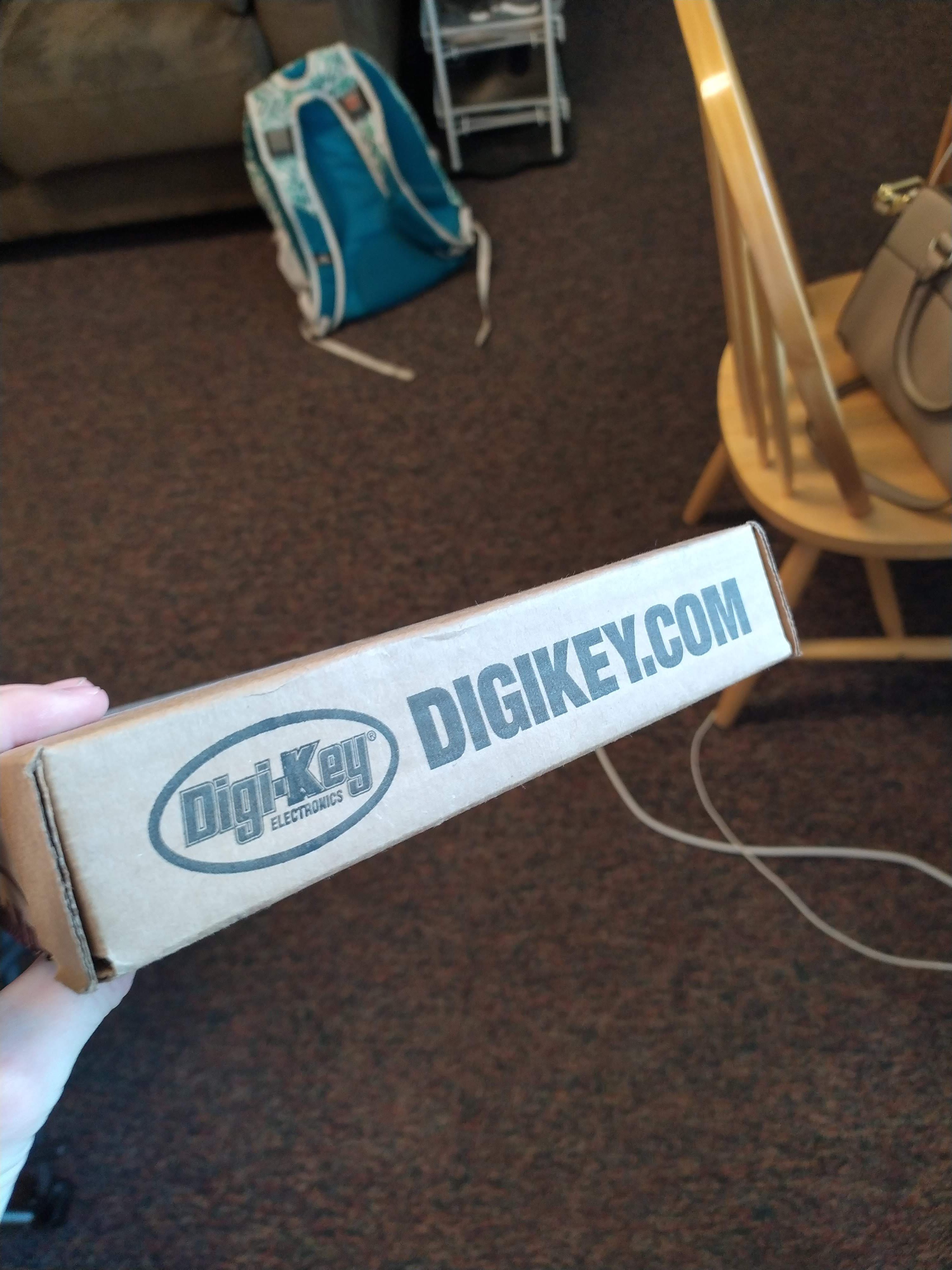
In hindsight, I probably should have purchased ZIF sockets, but I only recently learned about them. I ordered a few on AliExpress, so they'll probably get here sometime in late September ;)

The flash chips look like they'll work perfectly. Everything is the correct size, which means I'll just have to make an adapter to fix the pinout.

Here's the motherboard extracted from the typewriter. My soldering iron is absolutely awful, and this solder wick is of unknown origin, but I'm not going to let that stop me from moving forward with this.
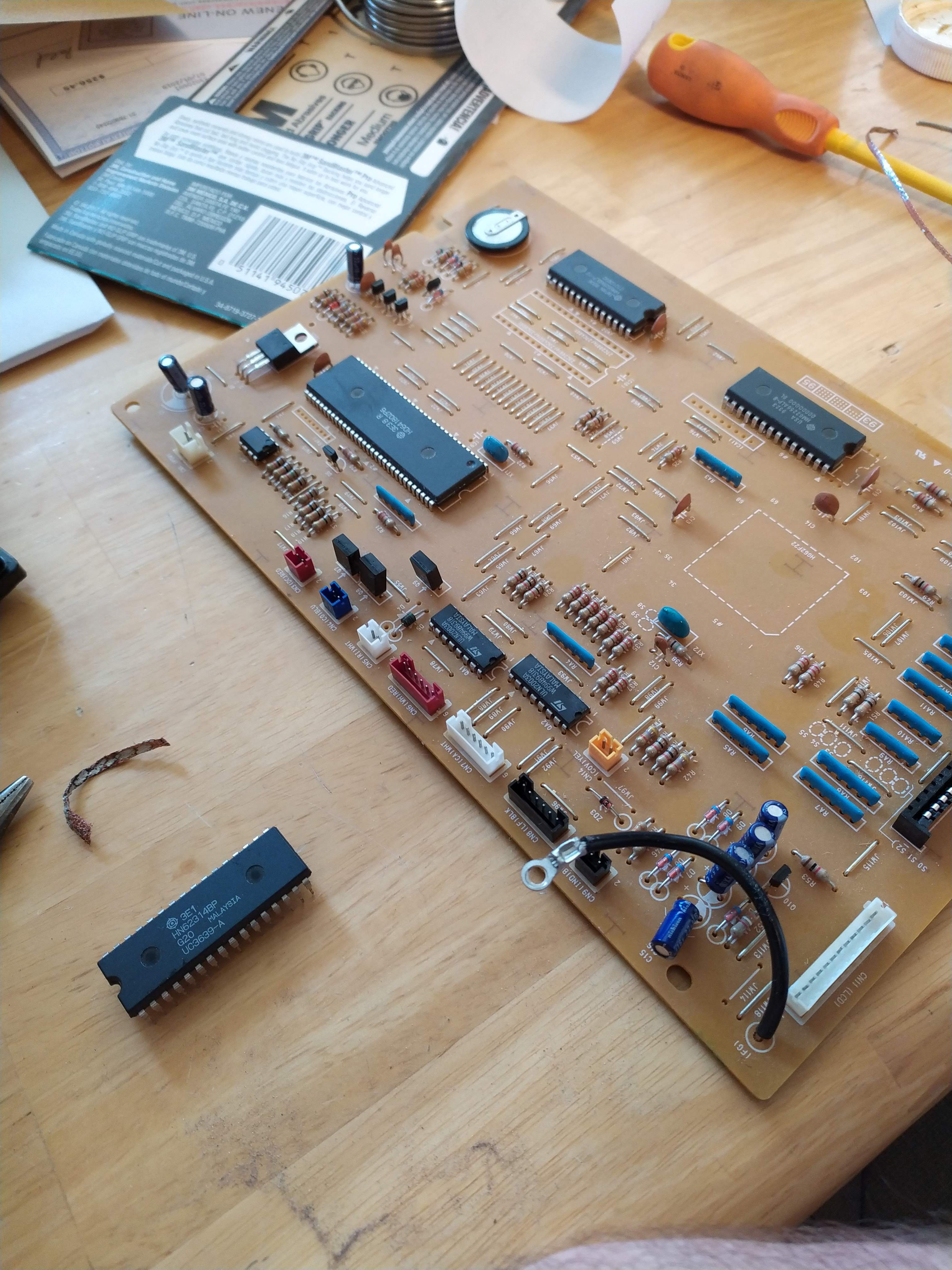
Luckily I managed to find my jar of flux paste, which made this a quick and fairly painless extraction. With enough flux you can solder with just about anything, and this ROM was no exception.
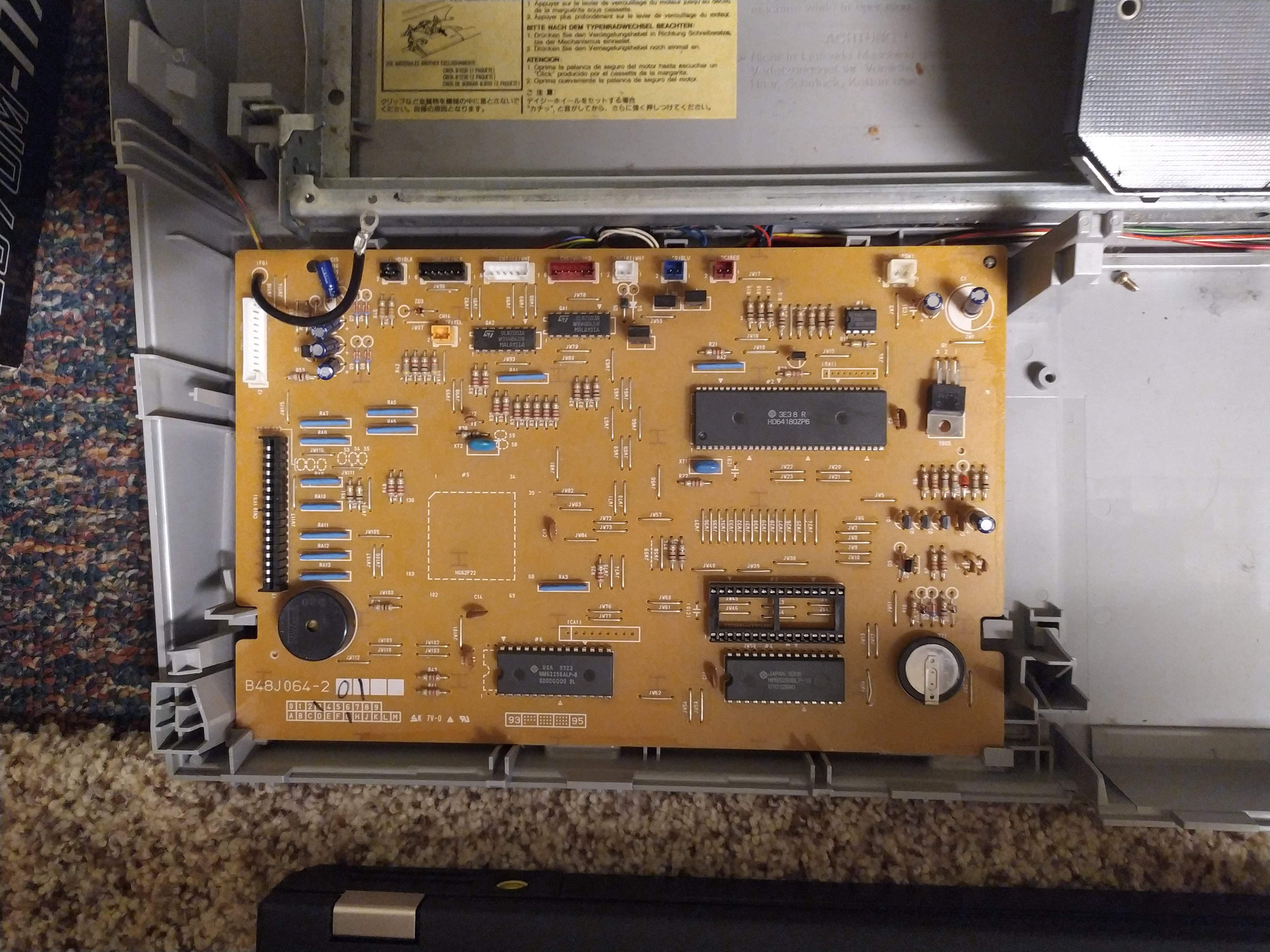
Here's another picture with the new socket in place. Now we're all set on the typewriter end of things! I feel like this is basically the equivalent of rooting a phone. We now have the ability to run arbitrary code on this typewriter. I just have to build a way to program the flash.

I forgot to take too many pictures of this step, but I had to build an adapter for the flash. The ROM has an NC pin where the flash's 19th address pin is, and the ROM's 19th address pin is where the write enable line is on the flash. I've never worked with protoboard before, but let's just say that I look forward to learning a proper PCB design tool so I don't have to work with this again.

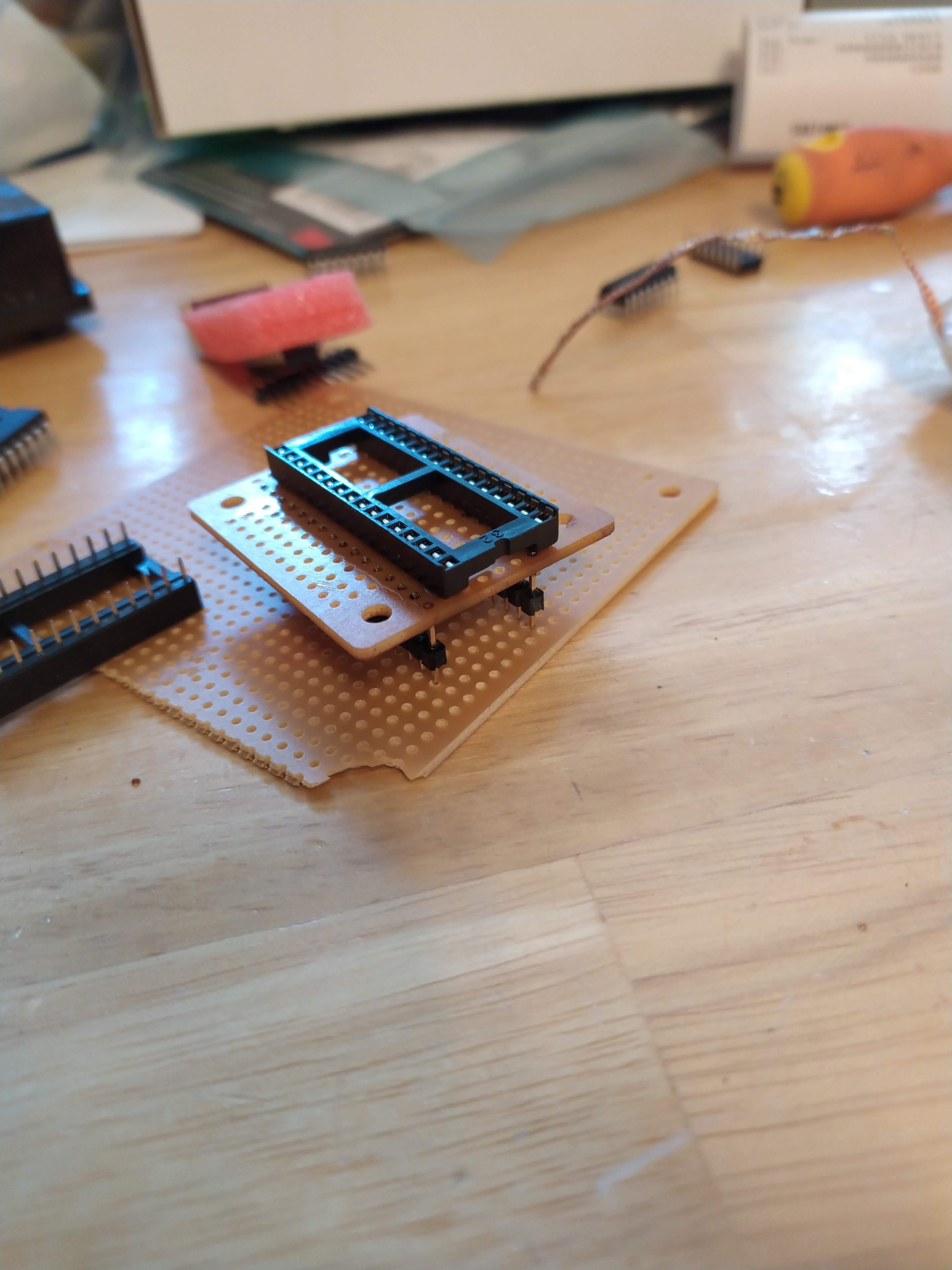
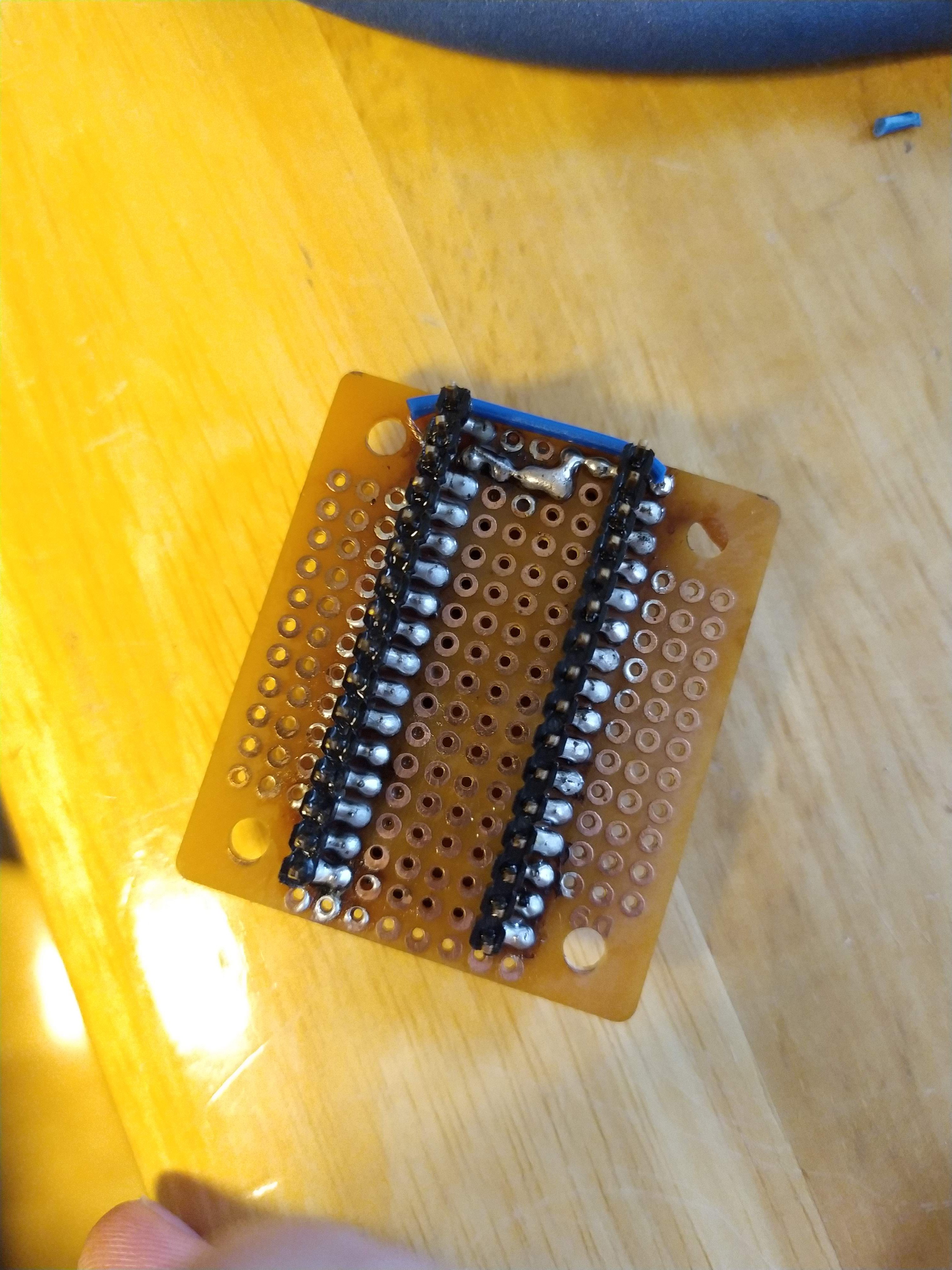
Here are some shots of the finished adapter. I'm not sure if this will have any utility outside of this project, but I'm happy with how it turned out.

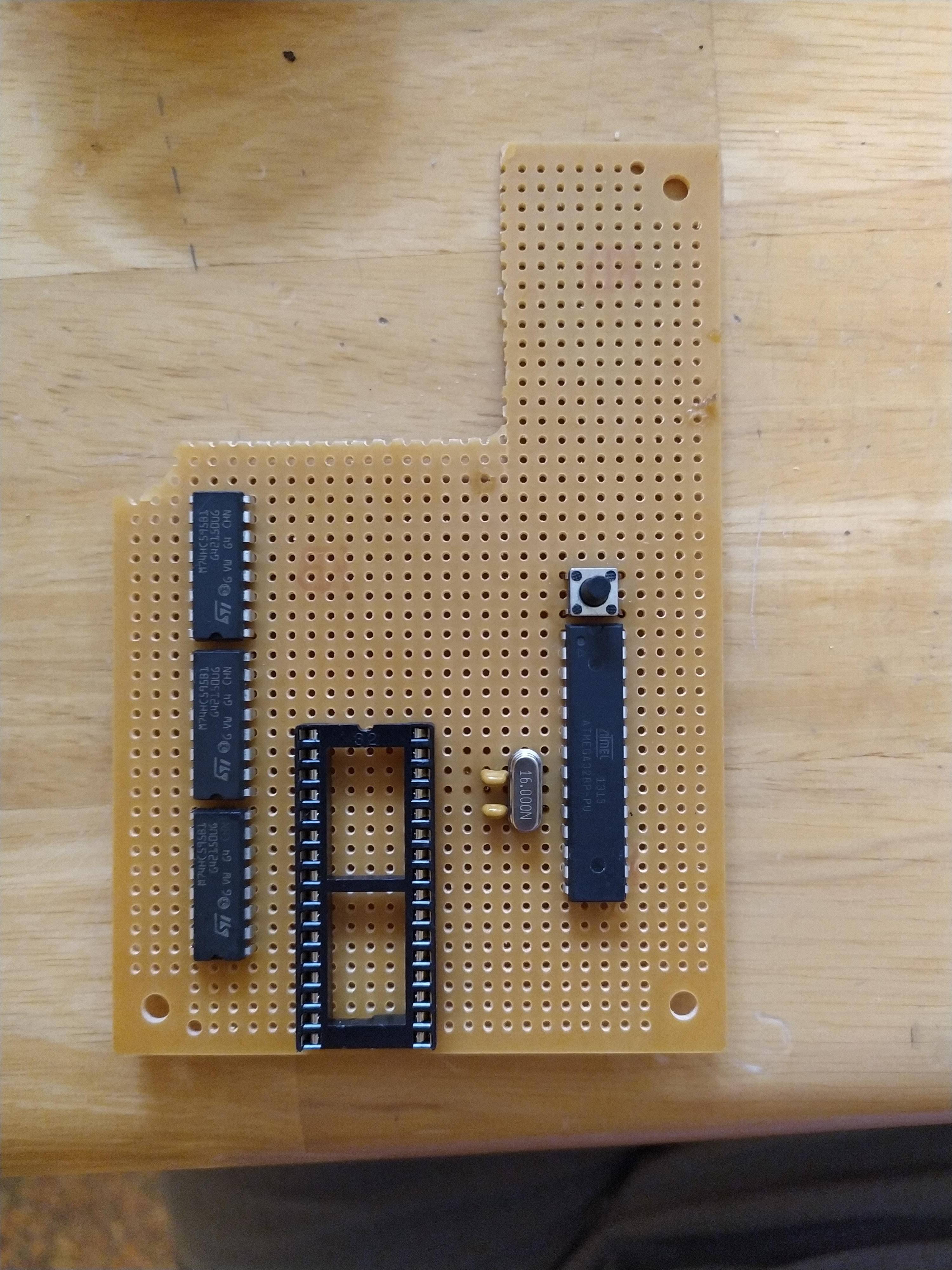
The next big hurdle is the reader/writer for the flash and ROM. Unfortunately they're not something easy like SPI, but at least they're parallel instead of some undocumented protocol. While rummaging around in my parts bin, I found three 74HC595 shift registers, which should provide ample output pins for the address lines. For the controller I went with an ATMega328P, partly because they're easy to work with, and partly because I had one already on hand. I can break out the serial pins to USB, and that should give me an easy interface to work with. Next log will be on building the programmer.
 furrysalamander
furrysalamander
Discussions
Become a Hackaday.io Member
Create an account to leave a comment. Already have an account? Log In.